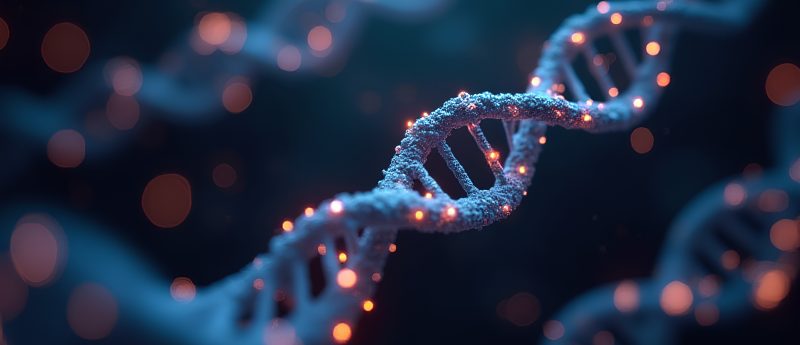Clinical relevance of immunogenicity: an interview with Arno Kromminga

Dr Arno Kromminga is a certified specialized immunologist with over 20 years of expertise covering the entire cascade of assay strategy and characterization of immune responses against biological therapeutics.
Dr Kromminga co-founded IPM Biotech in 1996 for the research of chronic inflammatory diseases, and led the company to become a pioneer in the area of immunogenicity, helping to bring the first biosimilar EPO to approval in Europe, as well as supporting the first biosimilar EPO submission in the US. IPM Biotech was acquired by BioAgilytix in 2016, becoming BioAgilytix Europe with Dr Kromminga serving as Senior Vice President and European Chief Scientific Officer.
Dr Kromminga is also a co-founder and board member of the European Immunogenicity Platform (EIP), and member of multiple scientific societies including the American Association of Pharmaceutical Scientists (AAPS), German Society of Immunology (DGfI) and the German Society of Clinical Chemistry and Laboratory Medicine (DGKL). Dr Kromminga has a PhD in Biochemistry from the University of Münster, and is an Associate Professor at the Institute of Immunology, University of Kiel, Germany.
Background questions
1. Could you introduce yourself and explain what began your interest in immunogenicity?
I have a background in clinical immunology and biochemistry and used to work in a medical laboratory for many years. This is the reason for my interest in the investigation of the aetiology of immune-mediated chronic inflammatory diseases. This class of diseases is often characterized by antibodies. Also, unwanted immunogenicity against therapeutic biological drugs is often characterized by antibodies, so the scientific interest is the same in these two fields. Moreover, I have always tried to transfer my experiences in chronic inflammatory diseases to immunogenicity, namely the clinical impact of drug-induced antibodies.
Our first individual in whom we detected anti-drug antibodies (ADAs) was a patient with a preterminal kidney disfunction who was treated with recombinant human erythropoietin for many years. Suddenly and unexpectedly, this patient developed clinical signs and symptoms of a pure red cell aplasia (PRCA). We were lucky to detect antibodies against erythropoietin which were identified to be the cause of this case of PRCA. This significant clinical impact of ADA against a recombinant biological therapeutic was the starting point for me to invest my scientific energy in this field.
As part of this investment, I have also started to work closely together with European and US health agencies as well as other key opinion leaders in this important area of drug safety. The clinical impact of unwanted immunogenicity is still my major focus in this field. Any kind of technological improvement to detect ADA and any kind of scientific knowledge to help to understand the cause and consequences of ADA is the driving force for me to be highly dedicated in this crucial area of drug development.
2. What does your current role at BioAgilytix, involving immunogenicity studies, entail?
Currently, as the European Chief Scientific Officer (CSO) and Managing Director of BioAgilytix Europe, I am a member of an executive team of a global bioanalytical company that is dedicated to large therapeutic molecules. This highly experienced team enables the investigation of the mode of action of these drug classes including immunogenicity but also beyond.
The immunogenicity assessment, even though crucial for the approval of a biological drug, is only one component for a successful drug submission. The measurement of the drug levels, the analysis of the pharmacodynamic properties and the determination of other response biomarkers is extremely important for receiving a whole picture of the biological characteristics. As CSO, I can drive the bioanalytical strategy within bioanalytical programs. In addition, it is equally important to get the entire bioanalytical team operating on the highest scientific and regulatory levels. Internal training is an important part of my current role. Training and consulting external colleagues is also one of my pivotal responsibilities.
Current Research
3. In your opinion, what do you think is the best method for assessing immunogenicity? What are the advantages and disadvantages of such a technique?
A method that is able to detect ADA as sensitively and specifically as possible is wanted. Assays cannot be too oversensitive, which is nowadays often criticized when we develop assays which can identify ADA in the low nanogram, sometimes even in the picogram range. I want to see any drug-induced antibody. Besides the concentration, the isotype of ADA is important as this may determine the clinical relevance of ADA. That said, it is important to use a method which easily detects low concentrated ADAs of any isotype. Low affinity, low concentrated IgM antibodies may develop over time in the course the maturation of the immune response to high concentrated, high affinity antibodies. An early detection of immune response may enable us to interfere at an early state for the sake of patients’ health and safety. This means the current state of the art method using a homogenous bridging assay format applying a sensitive detection method such as electrochemiluminescence, fluorescence or others is needed. Moreover, these methods need to be able to detect ADA in the presence of high levels of drug. While the dissociation of ADA-drug immune complexes is already a great start, other more sophisticated methods are needed. Pre-analytical steps such as solid-phase extraction with acid dissociation or precipitation and acid dissociation are already meeting some of these needs, but I would also like to see other methods which enable us to detect ADAs with extreme sensitivity in the presence of excess of drug without a pre-analytical treatment of the material.
4. What are the greatest challenges in immunogenicity today?
I am convinced that technologies will be developed for an ultra-sensitive and specific detection of ADAs. The greatest challenge in the future will be the interpretation of immunogenicity results: the identification of clinically meaningful data and distinction from the rest. It is still not totally clear whether antibodies in the low nanogram range will have a clinical significance. This means that we need to be extremely careful in the interpretation of immunogenicity results. Over-interpretation may exclude some patients from beneficial treatment options and under-interpretation may put patients’ safety at risk. Neither extreme is an option. Saying this, we need experts in the industry and regulatory agencies who understand both the technical challenges and the clinical risks. Hence, continuous life-time training for all experts involved in this complex field is needed. With the availability of more and more biosimilars, particularly in developing countries, we need to expand our efforts to educate scientists, clinicians and regulators worldwide and develop a worldwide network of experts in this drug development work. Societies such as the European Immunogenicity Platform (EIP), European Bioanalysis Forum (EBF) and the American Association of Pharmaceutical Scientists (AAPS) will tremendously contribute to this challenge.
Looking ahead
5. What are your predictions for the future of immunogenicity?
As mentioned above, the interpretation of immunogenicity data is challenging, particularly the correlation with the clinical impact. A useful and crucial tool will be the inclusion of novel biomarkers. By definition, biomarkers are indicators of normal or pathologic biological processes, or responses to an exposure or intervention, including therapeutic interventions. There is already a plethora of biomarkers available which can be determined with multiple technologies including immunological tools, flow cytometry, polymerase chain reaction or others. In fact, biomarkers can be used for diagnostic, monitoring, predictive, prognostic, safety, susceptibility and drug response purposes. The context of use for biomarkers as a drug development tool can range from patient stratification to assessment of safety and efficacy. Biomarkers can also be used as clinical endpoint markers. The degree of qualification or validation of these assays is dependent on the context of use. In the future, response biomarkers will be used more frequently to interpret the neutralizing capacities of ADA. Others will be used for patient selection, for the identification of disease entities and possibly also for the prediction of the risk for unwanted immune reactions.
6. Do you think there are any emerging technologies that could improve current studies?
Nowadays, we do have technologies in hand to detect ADAs with high sensitivity and at an early stage after administration. We also can detect any antibody isotype, even IgE-ADA which are usually up to 2000-fold low concentrated and IgG-ADA which are correlated with the risk for allergic reaction against the biological. Often, different technologies are used for the detection of ADA and IgE-ADA. It would be helpful to use a single technology for the detection of all antibody isotypes. In addition, much effort is spent to detect ADA in the presence of high residual amounts of the drug. Usually, an acid dissociation of immune complex is included as a preanalytical step (combined with the elimination of the drug). It would be helpful to also combine these preanalytical procedures with the analysis. Furthermore, for multiple domain biologicals numerous characterization assays are needed to identify the target of the immune reaction. It would be helpful if the above mentioned combined assays could simultaneously address the need for multi-domain assays. Besides these protein-based multiplexing tools, immune- and pharmacogenetic assays (utilizing polymerase chain reaction and/or next-generation sequencing) and more cellular assays (using flow cytometry) will be included in future studies for the molecular stratification of patients, for reducing the risks for unwanted immunogenicity and for monitoring treated patients.





